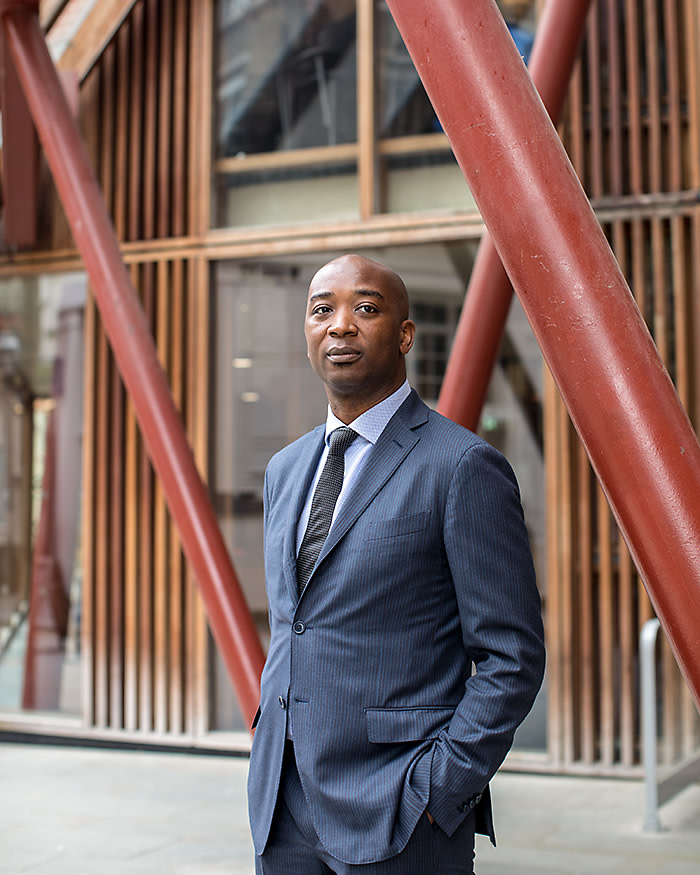Intersectionality: look at the individual, not the minority group

Roula Khalaf, Editor of the FT, selects her favourite stories in this weekly newsletter.
During the wave of racial violence in the US in the summer of 2016, Ellyn Shook had a conversation with a black colleague she was mentoring that made her reconsider Accenture’s approach to diversity and inclusion.
“It was the anger and frustration he was feeling about not being able to have a conversation about it at work when it was affecting him, both as a father, scared that his children would be shot, and his own safety and wellbeing.”
Ms Shook, Accenture’s chief leadership and HR officer in New York, realised the professional services firm needed to find a way to allow staff to talk about their feelings, particularly ones that may not always be obvious or apparent to their colleagues.
“We have had to push past looking at diversity in silos and really look at it from a human perspective,” she says.
Many companies still consider diversity policies solely in terms of dealing with separate categories of gender, ethnicity, sexuality, socio-economic class, religion or disability. However, a better awareness of how these strands overlap — a concept known as intersectionality — can improve an organisation’s understanding of its staff.
Jill Miller, a policy adviser at the UK’s Chartered Institute of Personnel and Development, says treating categories such as women as one homogenised cohort in the workplace is not always appropriate.
“It is often easier to implement blanket policies,” she says. “[But] with inclusion there is no silver bullet. Each person’s experience is unique.”
A CIPD report on the barriers to black, Asian and minority ethnic career progression, found that 40 per cent of the 1,290 people (white and non-white British) surveyed did not think their company had an inclusive culture.
Treating people as individuals is key to improving this perception, she says. Taking an intersectional view means recognising individuals can have multiple identities that overlap, for example an Asian LGBT woman or a white disabled man.

Jonathan Ashong Lamptey, director of The Resource Groups Company, a consultancy that helps organisations to improve performance through inclusive practices, says that although the term “‘intersectionality” gets thrown around, companies do not always know what to do with it.
“People often focus on the discrimination side,” he says. “You hear people talk about a double whammy: a black woman will have race and gender going against her.”
However, while some people have a number of disadvantages, this does not mean they do not also have privilege. Citing himself as an example, he says: “Being a 6ft 2 man has its advantages in the workplace but being black has disadvantages, at different times and different places.”
The way to build empathy, foster inclusiveness and create trust in the workplace, according to Mr Ashong Lamptey, is to discuss difficult topics in employee groups or staff networks that share a common identity. “Instead of guessing, ask the people who are having those experiences,” he says.
Explore the complete EMpower rankings
• 50 Future leaders and profile
• 100 Ethnic minority executives and profile
• 15 Advocates and profile
Read the Methodology
Accenture set up a number of discussion groups with the theme of “Building Bridges”. The first focused on race, another looked at religion. In Black History Month, the groups discussed topics such as what it means to be a black LGBT person, using the opportunity to address questions beyond race.
Ms Shook explains that the groups are led by staff but have the full backing of leadership. The goal is that “hard conversations become part of the mainstream”, she says.
Sonia Meggie, a diversity adviser for Business in the Community who has worked with organisations on inclusion, agrees that open dialogue is important, as without it people often make assumptions about others. She gives the example of a Muslim woman who was not invited to drinks after work because her colleagues assumed she would not want to go.
An online guide entitled “Let’s talk about race” was one of the organisation’s most downloaded items, she says, indicating an appetite for more open conversations.
As well as the standard inclusive leadership training, Ms Meggie advocates “reverse mentoring” whereby managers are mentored by a minority ethnic staff member. This can give them useful insights into the experience of colleagues who may feel they have to fit in with the cultural mores of the majority at work.
None of these initiatives is a quick fix. “Organisations should make this part of a long-term strategy,” Mr Ashong Lamptey says.
Ignoring the need for diversity together with inclusion risks “cutting yourself from the best talent,” says Ms Shook. When people do not feel they belong “you are not unlocking their full potential”, she adds. “It’s important to listen and connect with people. You can’t do this from the ivory tower.”
This article has been amended since publication to reflect Mr Ashong Lamptey’s current occupation.

Comments